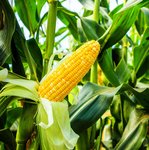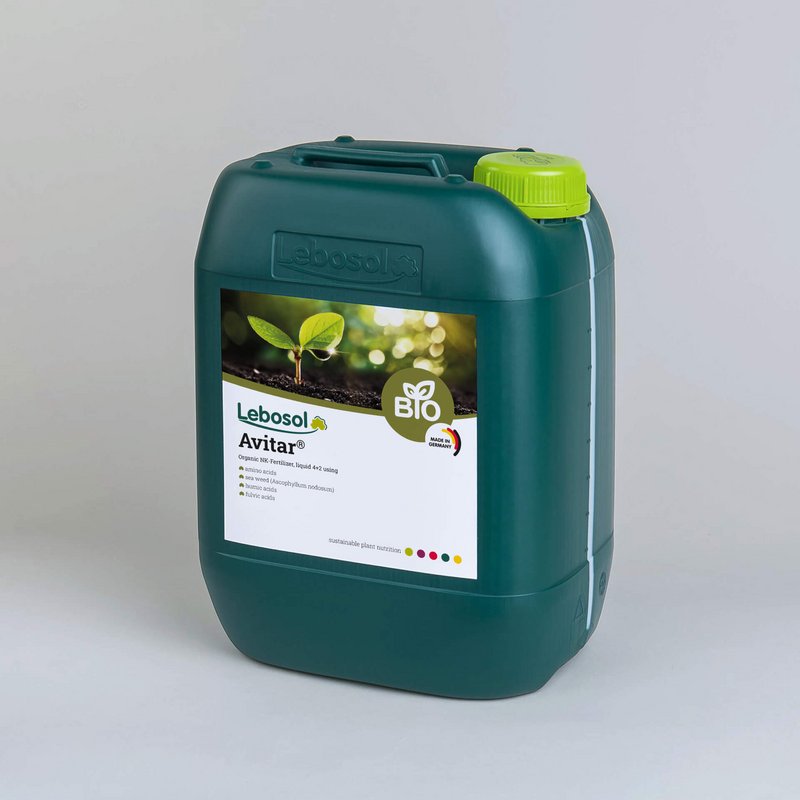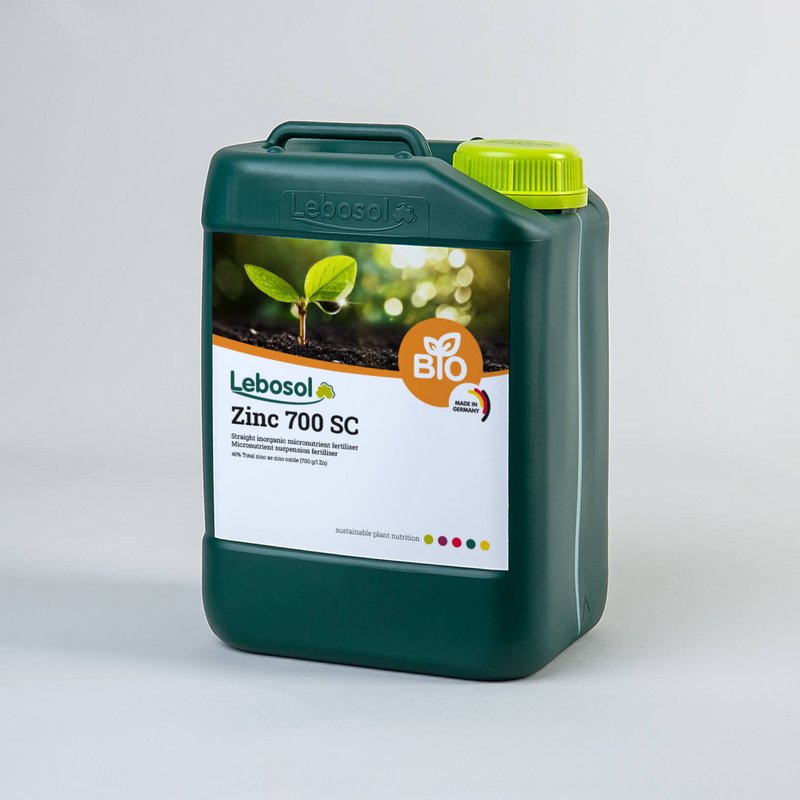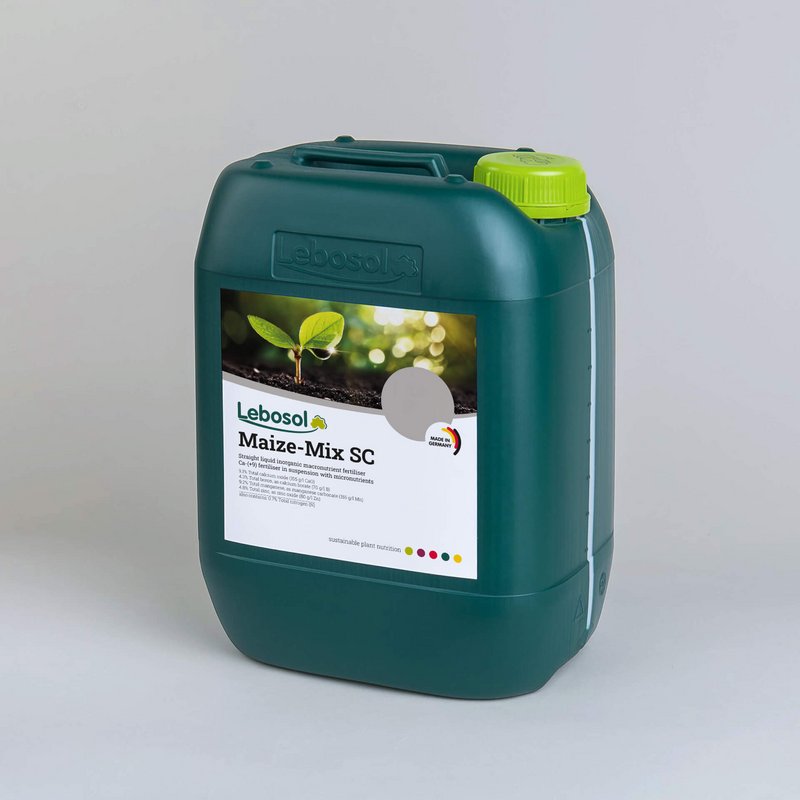Efficient foliar fertilisation in maize cultivation
Optimisation through targeted nutrient supply
Maize is particularly sensitive to changes in the weather due to its slow juvenile development combined with a slowly developing root system. Weather extremes such as low soil temperatures or pre-summer drought can significantly slow down growth and impair yield performance. Foliar fertilisation offers an effective solution for a rapid and targeted supply of nutrients to fully exploit the yield potential of maize. Maize plays a central role in modern agriculture, especially in animal feed and as a raw material for biogas plants. Needs-based and weather-adapted fertilisation with all nutrients is crucial to optimise the quality and quantity of the harvest while minimising nitrogen and phosphate losses.
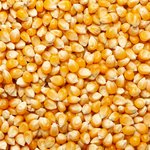
Seed treatment for robust maize
Add Avitar® as a nutrient treatment
Effective seed treatment is crucial for improving the resilience and productivity of maize. Avitar®, a specially formulated fertiliser containing amino acids, humic and fulvic acids and algae extracts, supports maize growth from the start. Treating the seed with Avitar® promotes a faster start and vigorous root development, which is particularly beneficial in extreme weather conditions.
In a field trial, it was found that the use of Avitar® significantly supports the initial development of maize in a cool spring. This led to an increase in yield and a higher monetary surplus despite already good site conditions. Application: 0.5 litres of Avitar® per dt for seed treatment.
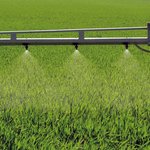
Effective herbicide management
How do you manage herbicide contamination in maize crops?
Herbosol® was developed to safeguard the effect of soil herbicides in unfavourable weather conditions, such as rain. An additive especially for soil herbicides, which enables efficient use of the herbicides thanks to its stabilising effect. The application of 0.4 l/ha Herbosol® reduces the displacement of the active ingredient and improves weed control without compromising crop tolerance.
In post-emergence, herbicide measures, especially with sulfonylureas, can cause significant stress. In order to effectively support the plants, the combination of herbicides used in post-emergence with an amino acid-containing fertiliser such as Avitar® is recommended. This helps the plants to detoxify herbicide active ingredients for the maize plant more quickly and to overcome stress phases more quickly. 3 l/ha in combination with the herbicides can be used as a supportive measure.
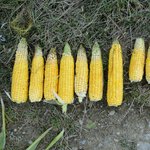
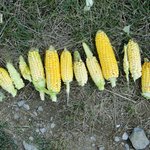
Reduction of heat and radiation stress
Improve stress tolerance in maize with foliar fertilisation
In recent years, new stress factors such as increased UV radiation have increased significantly, which can impair chlorophyll production and lead to yield losses. Studies show that the use of antioxidants such as zinc is crucial to counteract these effects and improve the stress tolerance of plants. Targeted foliar fertilisation with zinc and boron during critical growth phases strengthens the natural resistance of maize plants to intense sunlight and heat, which has a positive effect on yield formation.
To strengthen stress tolerance in the event of expected intense heat/sunlight, we recommend 2 applications at the 4-leaf and 8-leaf stages, each with 2 l/ha Lebosol®-Boron + 1 l/ha Lebosol®-Zinc 700 SC.
In addition, an effective supply of essential micronutrients such as boron and zinc in the early youth stage can promote cob formation and thus grain yield. We recommend the targeted use of these individual nutrients, with applications ideally being made from the 4-leaf stage as part of the herbicide treatment or as a stand-alone measure between the 6- and 8-leaf stage.
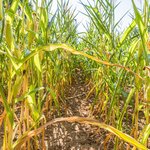
Increasing stalk stability and stress tolerance in maize
How silicon and manganese work
The application of micronutrients directly to the leaf offers the decisive advantage that the nutrients are available exactly when the plants need them most. This is particularly important for stem stability and the general stress tolerance of maize plants. The foliar fertilisers Lebosol®-Silicon and Lebosol®-Manganese 500 SC have proven to be particularly effective. Lebosol®-Silicon is based on orthosilicic acid, a form of silicon that can be absorbed by the plants directly through the leaves, in contrast to the silicon compounds present in the soil. This targeted supply helps the maize plants to cope with drought stress and promotes resistance to external stress factors such as strong sunlight.
In addition, Lebosol®-Manganese 500 SC strengthens the stalks, increases vitality and the efficiency of nitrogen utilisation. An application of 1 l/ha of this foliar fertiliser contributes significantly to strengthening the stem structure and improves the overall resilience of the crop.
Our application recommendation is: 0.5 l/ha Lebosol®-Silicon + 1 l/ha Lebosol®-Manganese 500 SC between the 4-leaf and 8-leaf stage.
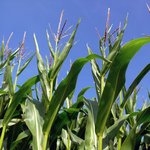
Overcoming growth depression
Effective phosphorus supply in maize with liquid fertilisers
Particularly in critical phases of maize development, between the 6 and 8 leaf stage, unfavourable conditions such as drought or waterlogging can lead to considerable yield losses. Typical signs of a phosphorus deficiency are blue-purple coloured leaves.
Lebosol®-PK-Max plays a central role in promoting youth development and in the energy and water balance of the plants. By providing phosphorus and potassium, this fertiliser helps to quickly overcome critical nutrient deficits and growth phases and supports the maize in its vital development. Use 5.0 l/ha of Lebosol®-PK-Max from the 4th leaf stage.



